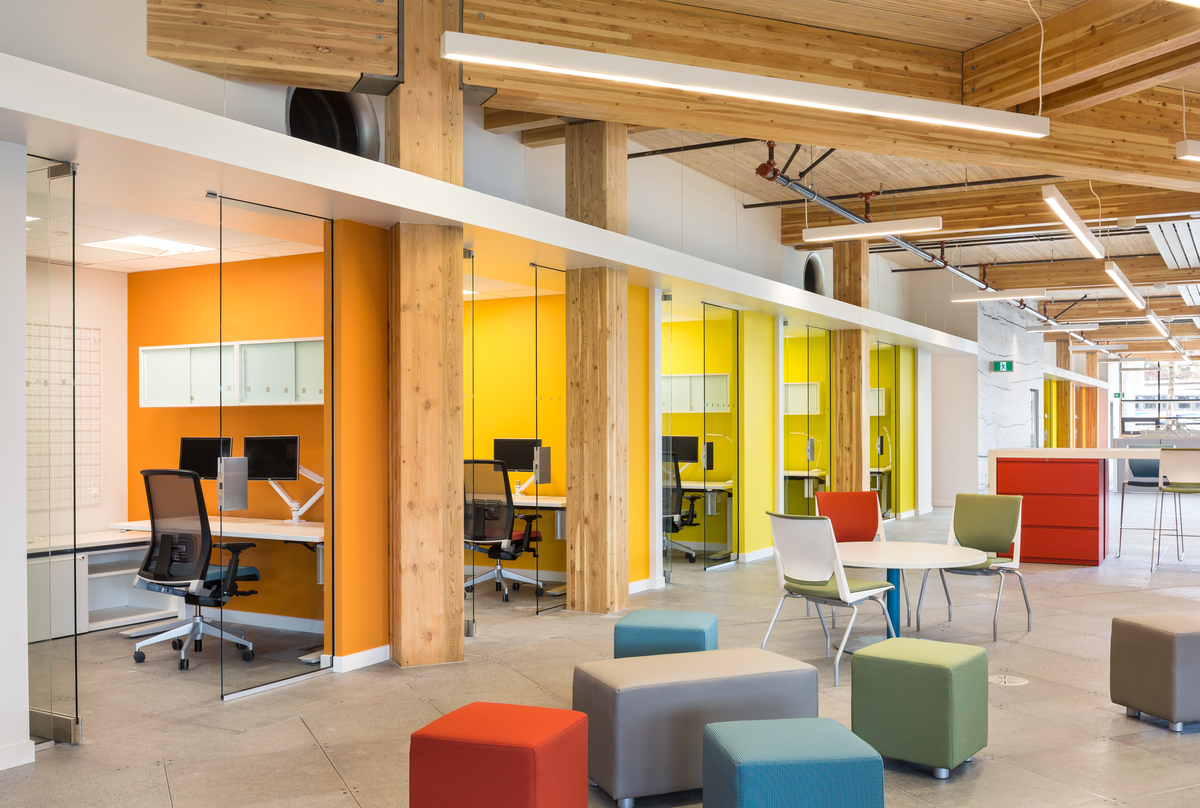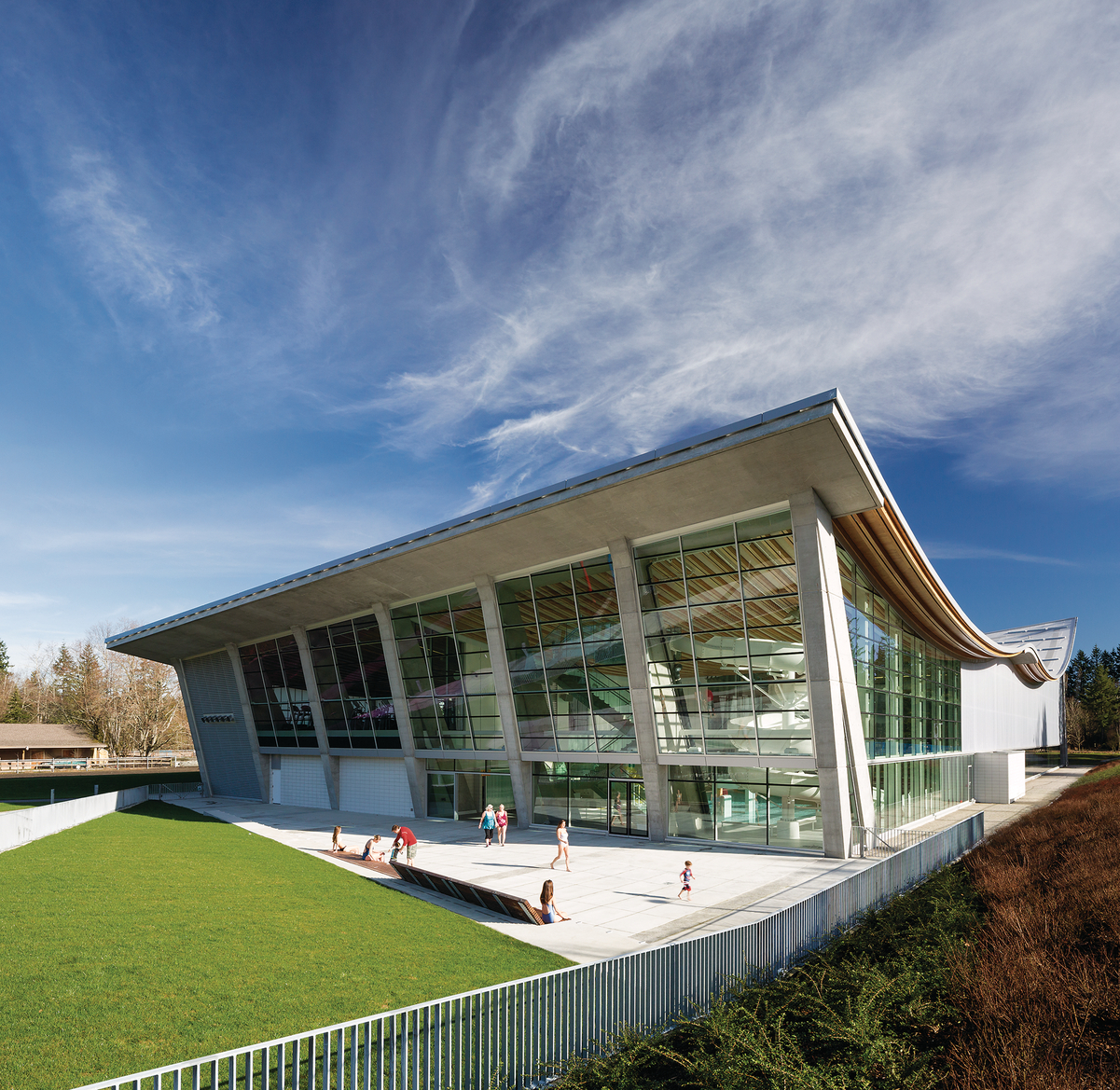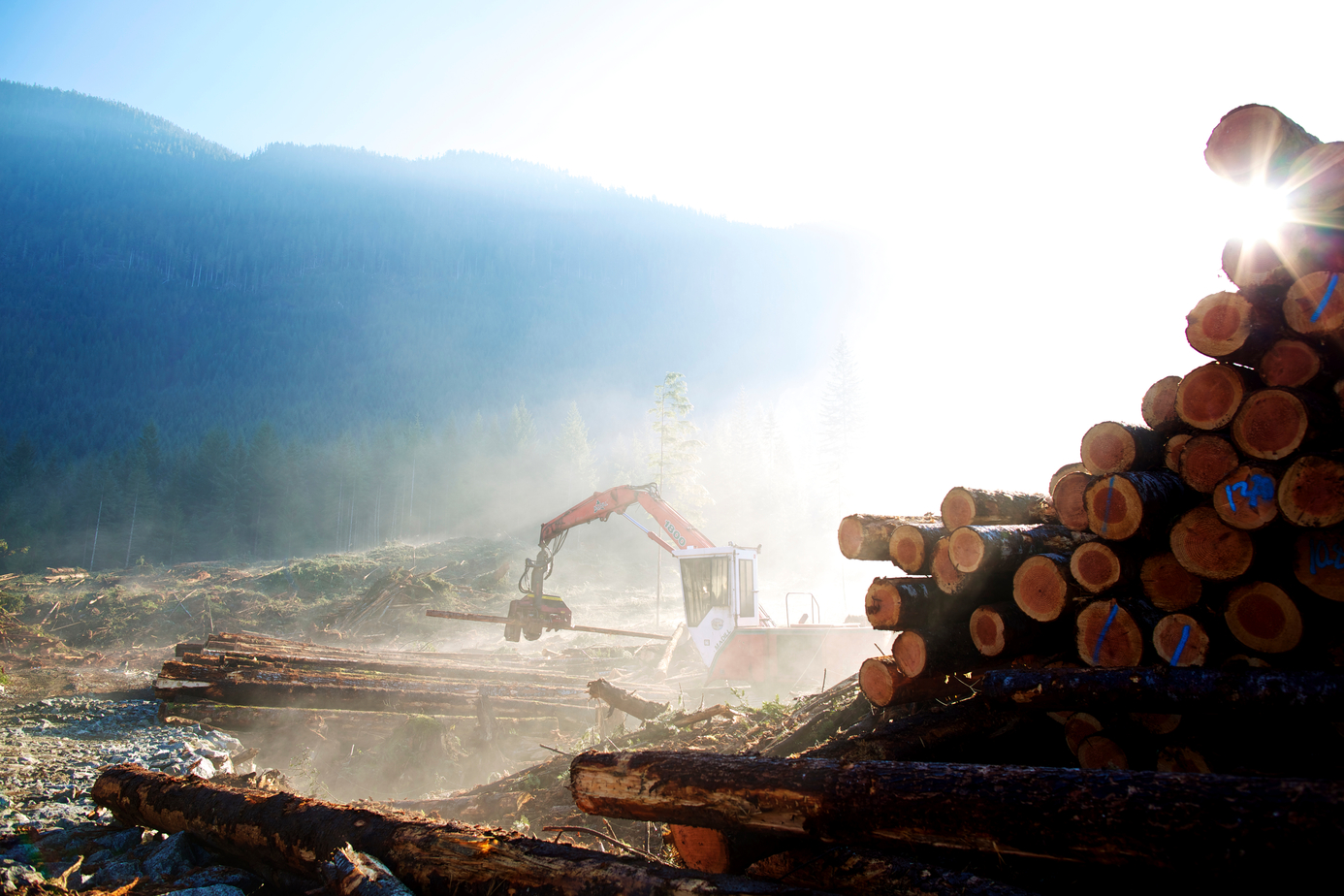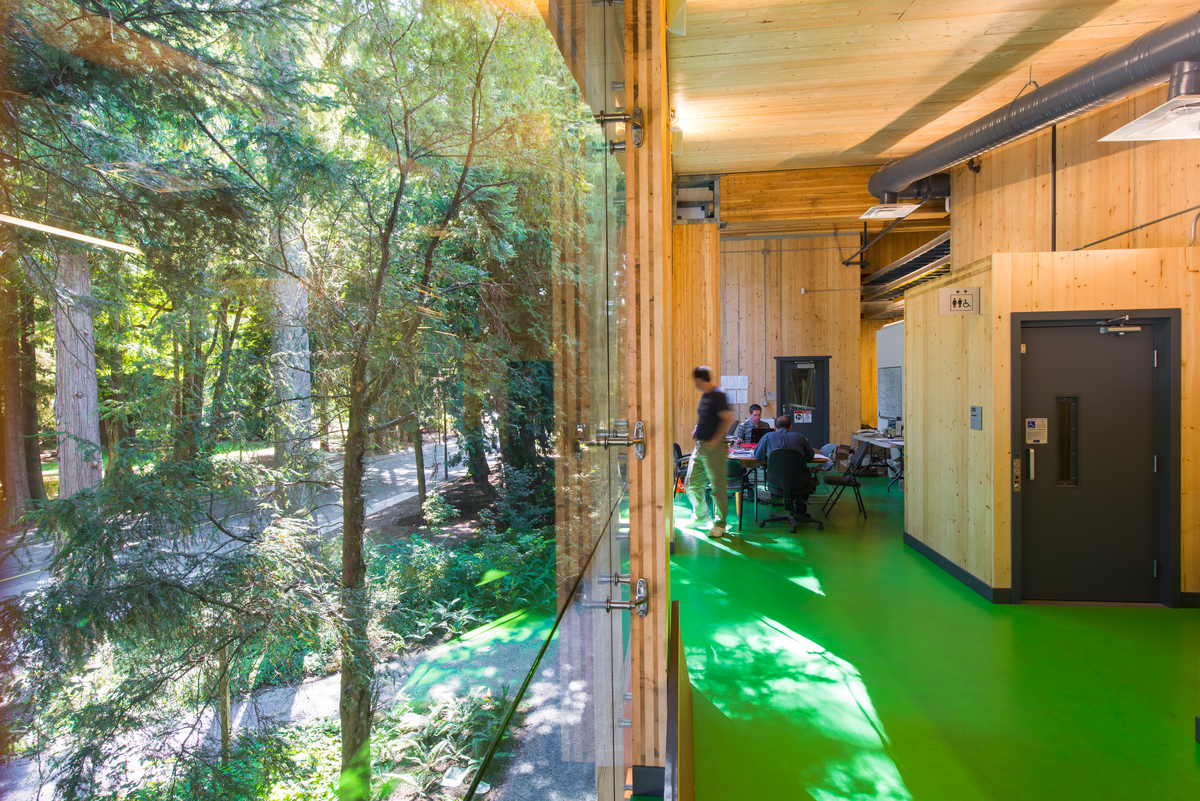Interior view of completed MEC Headquarters featuring mass timber construction
Photography: Ed White Photographics
Study concludes timber’s global warming potential could be up to 70% lower than concrete
When it comes to the environmental impact of mid-rise office construction, timber’s global warming potential (GWP) is nearly a quarter that of a concrete alternative, in a best-case scenario. That’s the findings of a British Columbian life cycle assessment (LCA) study that compared a traditional cast-in-place, reinforced concrete frame and a laminated timber hybrid design that uses cross-laminated timber (CLT) and glue-laminated timber (glulam). The purpose of the research is to examine quantitative measurements as they relate to the environmental pros and cons of wood building construction compared with other material choices.
Results show timber outperformed concrete in 10 of 11 categories
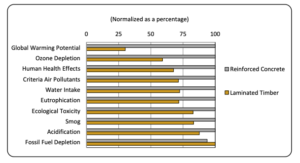
The results show laminated timber performed better than concrete when considering 10 of 11 environmental impact categories. In five categories—ozone depletion, human health, air pollutants, water intake and eutrophication—timber outperformed concrete by at least 25 percent or more.
While timber’s overall embodied energy was higher than concrete, much of that came from renewable sources
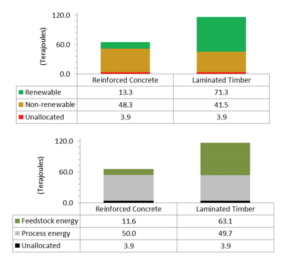
The comparative LCA study measures timber’s embodied energy to be higher but with a significant portion coming from feedstock (i.e.biomass). There’s relatively no difference between the concrete- and timber-framed options when it comes to process energy (fuel sourced used during manufacturing and fabrication). When considering the facility’s end-of-life, the timber-framed design offers additional eco-friendly disposal options, including reuse and biomass energy recovery—an advantage over the reinforced concrete design.
Overall, this research suggests laminated timber can offer environmental benefits when compared with reinforced concrete commercial office construction. The report notes additional research is required in order to improve the quality and comprehensiveness of the study and future comparative LCA studies related to building construction systems.
